F7F Tigercat at Duxford Flying Legends Airshow 2002
|
I've been interested in historic military aircraft since I was a kid, but I can't remember having ever heard of the Grumman F7F Tigercat before attending the Flying Legends Airshow 2002 at Duxford, England. Perhaps I'd never heard about them because only 360 of them were built, and only 6 are still flying today. |
 |
|
First flown in November of 1943, several variants were eventually built, including single and twin seat versions. As you can see, this particular aircraft is a two-seater; it was further modified for photo reconnaisance duties. |
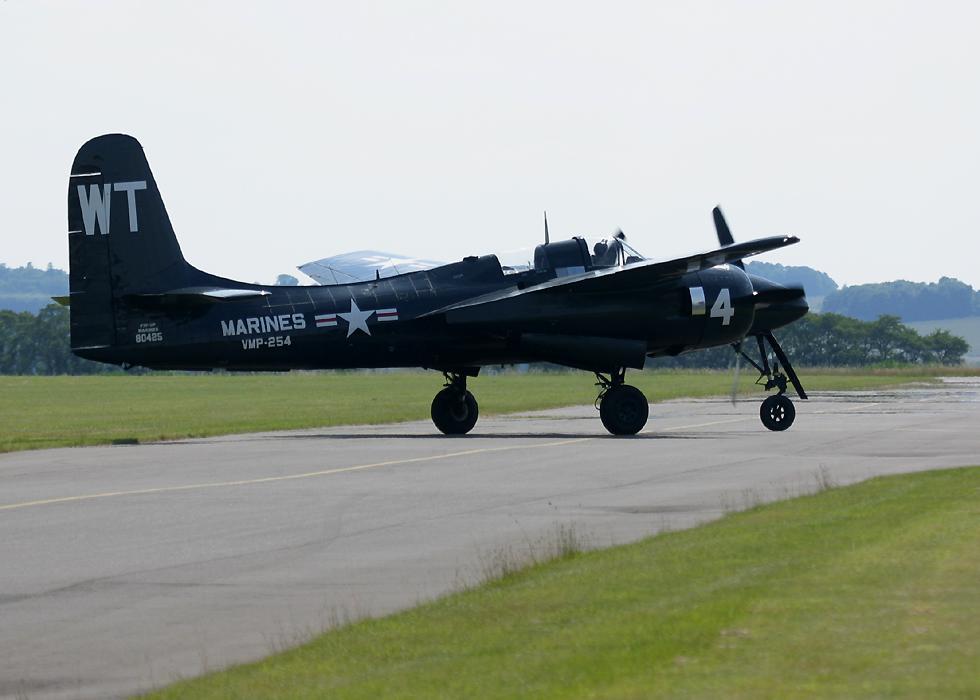 |
|
Although designed to operate off aircraft carriers, Tigercats mostly flew from ground bases. The two 2100 horsepower radial engines make them pretty powerful, with an impressive maximum speed of 435 mph. |
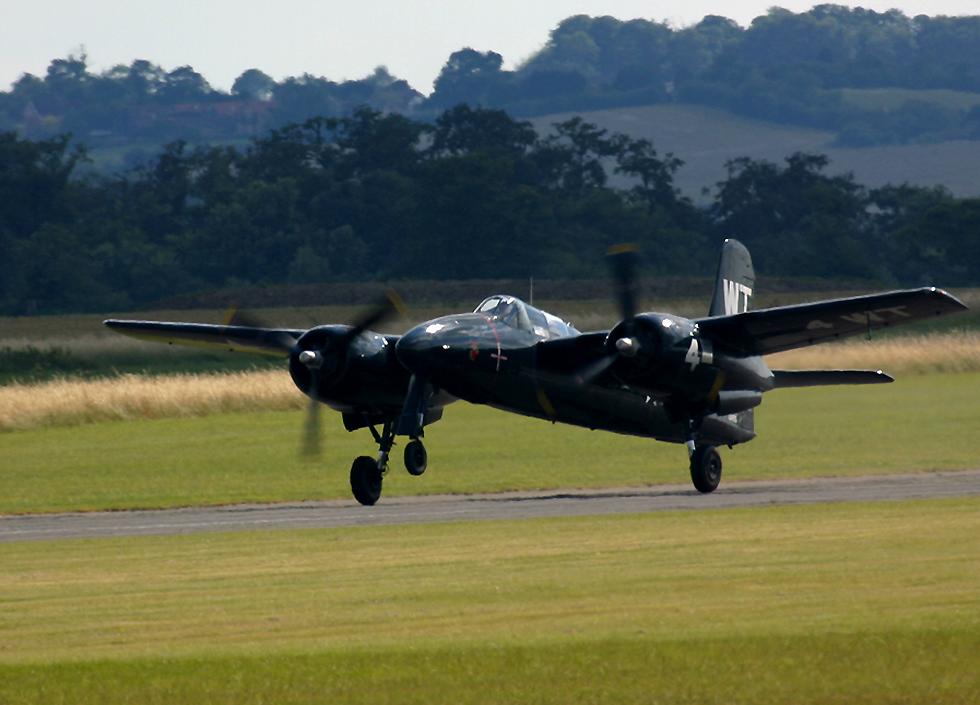 |
|
With four .50 caliber machine guns and four 20mm cannons, the Tigercat also had a lot of firepower. |

|
|
All of that power also allowed the Tigercat to carry two 1000 pound bombs, or a single torpedo. |
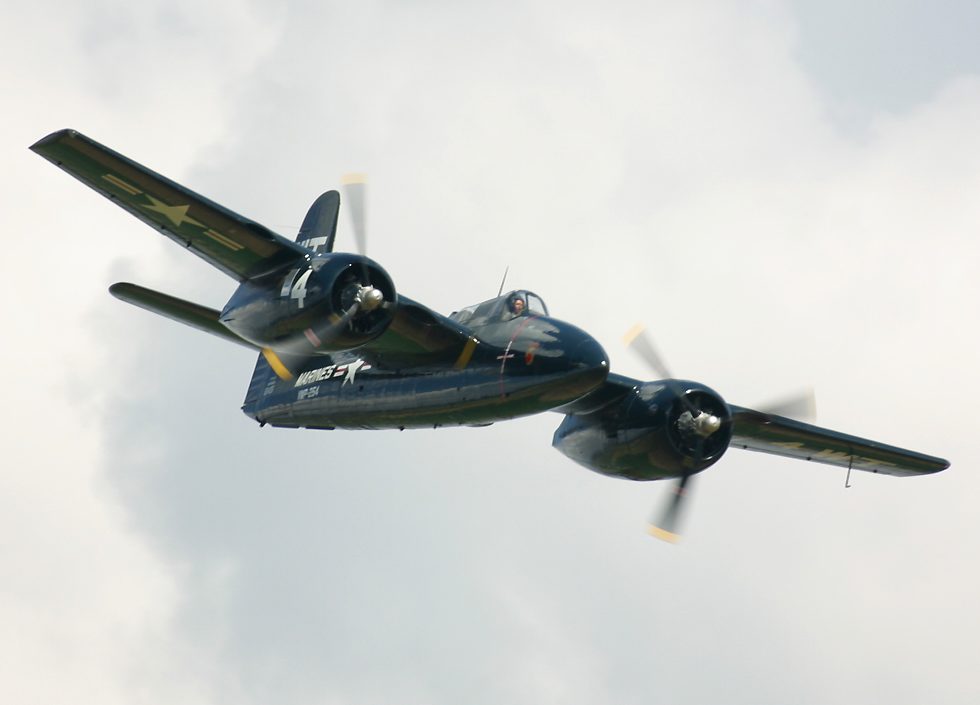 |
|
However they arrived too late for service during the war, and the arrival of jets after the war quickly made them obsolete. Nevertheless, 64 were converted into night fighters by adding radar sets into the nose, and some served in Korea as electronic reconnaisance aircraft or target designators for B29 Superfortress raids. |
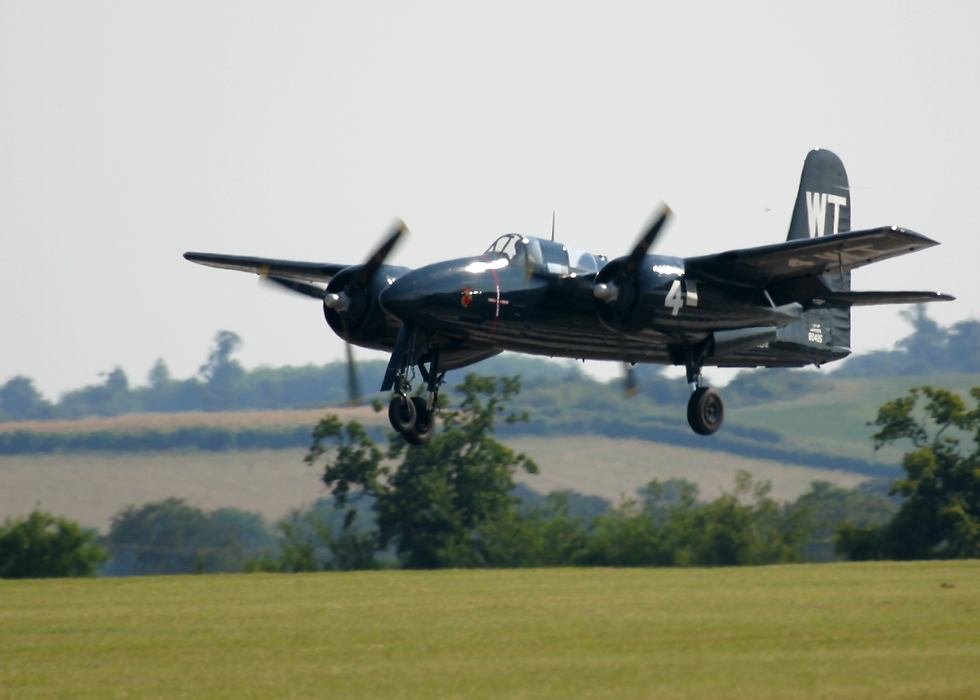 |
|
It was one of the few American fighters of world war two with tricycle landing gear, which gives a definite visibility advantage when landing on aircraft carriers. Along the front edge of the wing you can see four narrow air inlets for the radiators. |
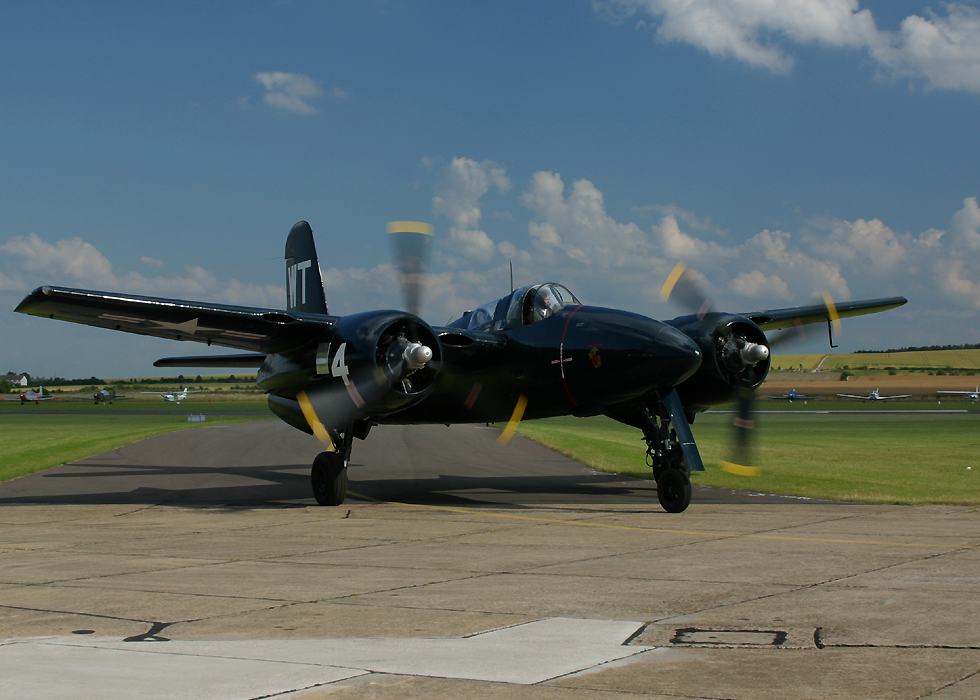 |
|
To see it folding its wings, though, you would have had to be around on the day after the show! |
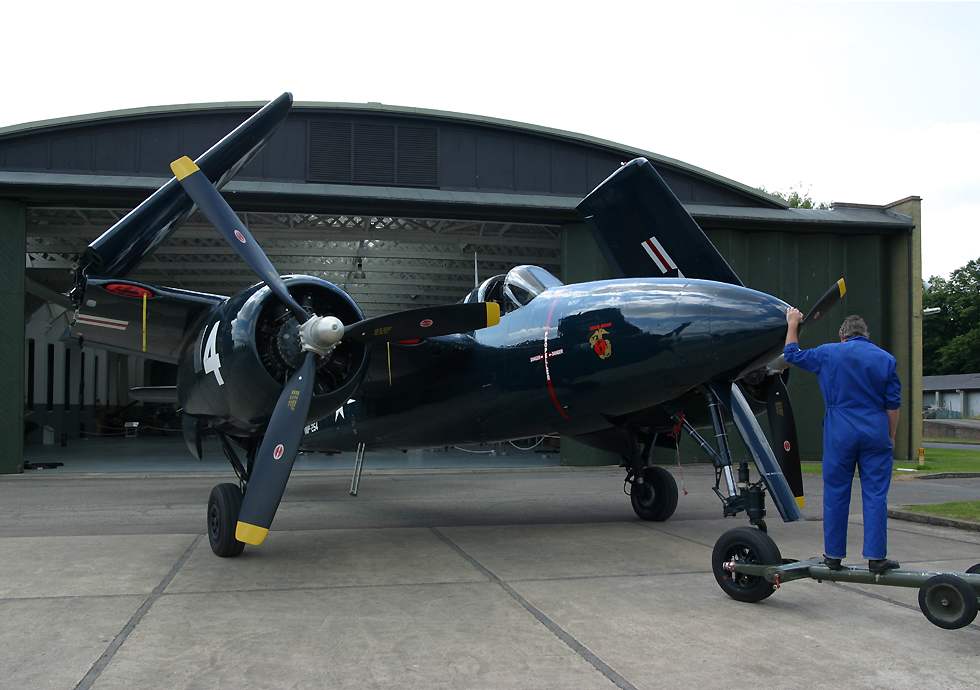 |